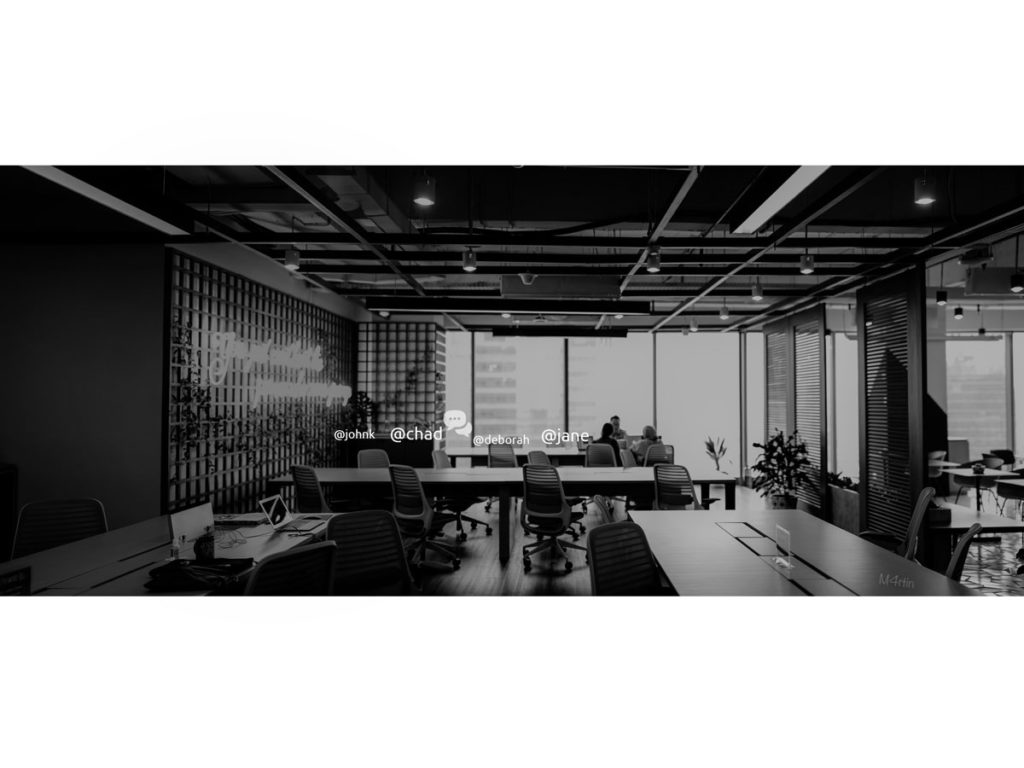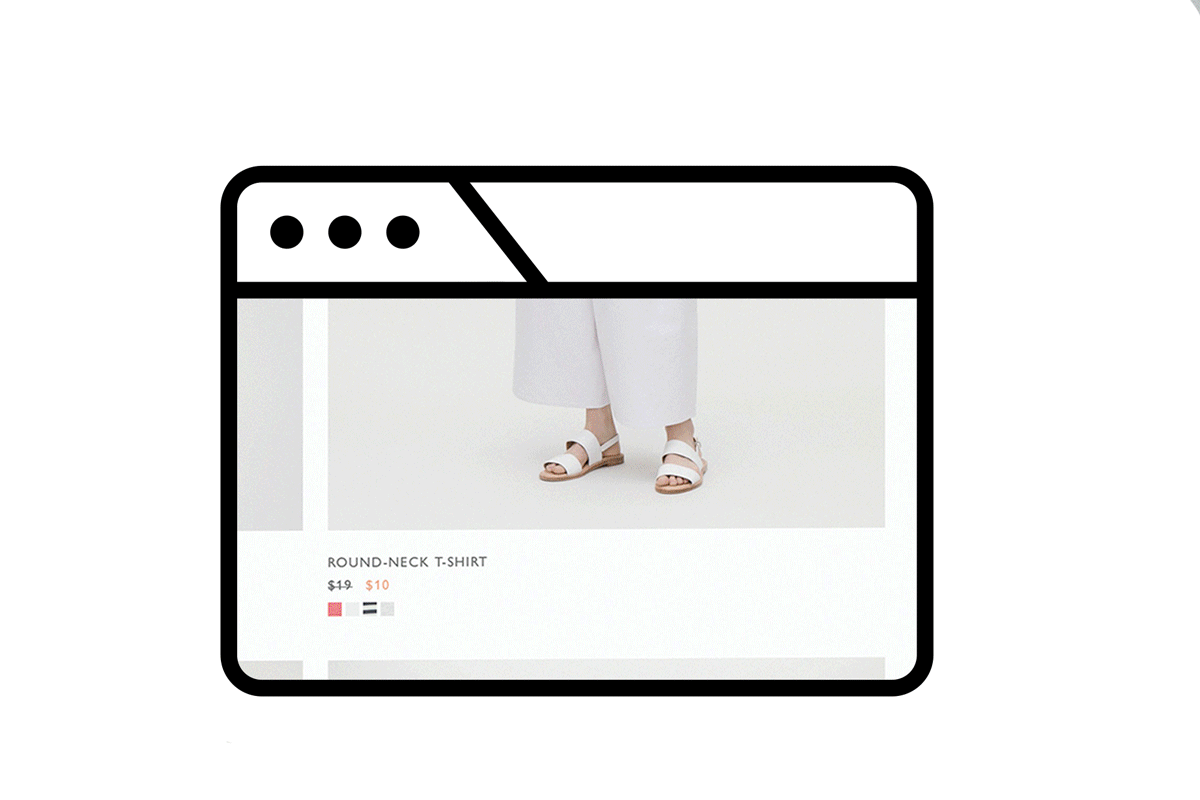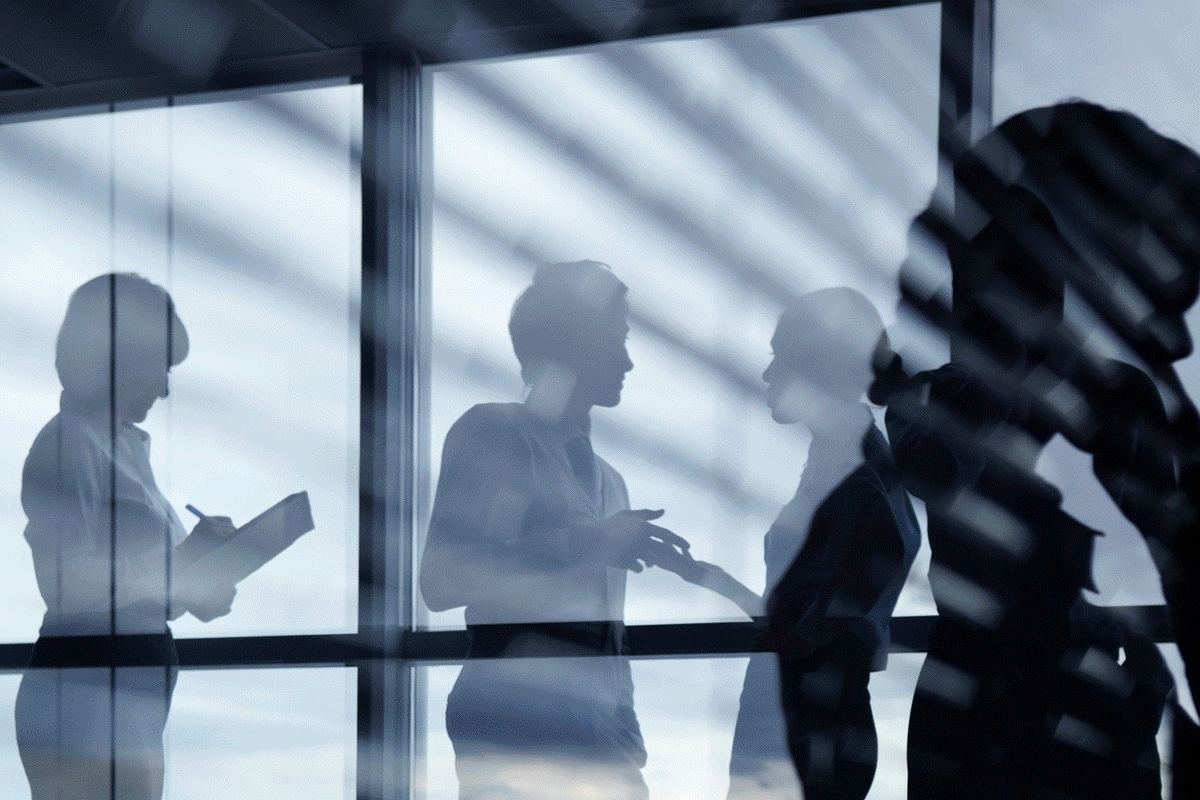
How to decide what to focus on in a time when everything is in flux? And how to prepare for the future when this year has been a year of exceptions?
When everything is in flux, then we want to focus on those shifts that will have a lasting impact. A good way to spot those lasting shifts is to listen in when those compare notes, who deal with change on a daily basis. Last week’s Websummit has been exactly the place to do this.
Among the many insights to be gained from the conference one pattern stood out:
our new world of 2021 will be hybrid.
Yes hybrid, meaning a combination of the physical and the virtual. Throughout 2020 a digital layer has increasingly complemented our physical activities. This has happened across our work environment, events and retail. This has shaped a new order of things, which likely to last beyond our Covid-driven lifestyles.
Where do we stand now?
But before jumping ahead into the post-pandemic world, let’s first determine where we stand. What did we learn and how have we evolved so far?
The Web Summit talks have highlighted how the first phase of the pandemic was about reacting and less about proactive acting. Leaders’ activities circled around initiatives to protect the physical health of employees and customers while maintaining the financial health of the business.
In the next phase, executives have switched from managing toward leading. From the initial survival mode they moved on to determine how they can adapt their business in the medium- and long-term. Those who succeeded have developed a clear vision of what their business should look like once they would come out of the pandemic.
But not only executive focus has evolved over the course of the pandemic. Also media coverage has shifted its focus. In the beginning, media tried to determine how our lives are changing. Since then we have managed to understand and adapt to our new temporary lifestyles. Now the role of technology in fighting the pandemic and in shaping the future of how we live has become the main topic of investigation.
This allows for the question of what comes after the pandemic.
What’s ahead for us?
Now, that we are nearing the distribution of vaccines, businesses need to determine what our post pandemic future will look like. The short answer is:
the future will be hybrid.
This means we most likely will have a hybrid workplace. Events possibly will be carried out in a live-digital combination. And the customer interaction in retail environments will be increasingly hybrid as well.
At this point you might question whether Covid really can have such a lasting effect on our workplaces, events and consumption? And rightfully so. But it’s not all the effect of the pandemic. Covid has just been a catalyst for what’s been in the making for quite a while already. Our lives already have become virtual – or shall we say hybrid – prior to Covid. But the offering of many businesses hadn’t exactly kept up with this shift.
Our digital lives
You will have noticed how our lives have become hybrid over the past years.
We virtually schedule our real-life restaurant appointments and meetings. When we leave our physical office, we use our mobile phone to catch a cab. When we play a virtual game, a digital tool enables us to have a real-life video conversation with friends. And the assessment of wine and weather has been outsourced from our senses to our apps.
Gaming activities might serve as a helpful indicator as to where things are trending. In a way, games have already become a virtual extension of people’s real lives.
In games, users play together with real friends, “creating memories together”, as Discord founder Jason Citron calls it. He has built a highly successful app, to do exactly that. Discord gives people their space to get the feeling that they spend time together with their friends, unmediated by algorithms. A real conversation that happens to be online.
When game users spend money to dress up their virtual avatars, they do this to send a message to their environment, which is equal to the message of real-world fashion. Their avatar signifies an identity or a belonging to a group. In Websummit’s discussion between fashion guru Virgil Abloh and game guru Jens Hilgers, both agreed that by now, “dressing up” in a game has become a natural, self-evident act.
Covid as catalyst
One major effect of Covid on businesses has been in that it has removed any inertia. By reshaping our lives and activities, Covid has diminished all legacy and perceptions of how we should tackle a specific problem. As a result, businesses have been willing – or rather forced – to try new things. In other words, Covid has lowered the cost of change.
In that way, Covid has been a major catalyst for change. The year of the pandemic has accelerated digitalisation beyond what could have been expected. Businesses have increased their capabilities at a rate that has been unseen in recent years. If you ever wanted to visit a tech conference where all speakers agreed on one thing, Websummit 2020 would have been your chance. 2020 has been an incredible accelerator of change.
Bret Taylor, now president and COO of Salesforce has been around change for a bit. As the co-creator of Google Maps, as a Benchmark Capital entrepreneur in residence, as former CTO of Facebook, one should think that normalcy surprises him more than change. Yet he experienced 2020 as facilitating a “beginner mind”. Here is what he had to say: “We have re-imagined how we do business”. “We depended on so many things, had so many perceptions. We thought work needs to take place in the office, we thought we need to meet a customer in order to be able to convince them.”
Also Basecamp’s co-founder & president, Jason Fried saw 2020 busting many myth’s, around the right ways to work. He expects businesses coming out of 2020 with more choices than before.
Burberry’s Global Vice President Marketing, Digital & Innovation, Mark Morris has experienced a “greater willingness to try.” According to him the “tried and trusted approach in how they create value” of many businesses had been rethought.
In particular, businesses have rethought the roles of offices, of meetings, of communication, of sales and of idea generation processes.
But it didn’t stop at rethinking. Also execution has kept pace.
Levi Strauss CEO, Chip Bergh, saw one effect of 2020 in building up business’ capabilities much faster, while following consumer needs closely.
In a discussion with Philips’ Chief Innovation & Strategy Officer, Jeroen Tas and Citi’s Chief Innovation Office, Vanessa Colella, they emphasised not only that many products got out quickly, with new solutions being found, but have seen more collaborations among competitors.
At times the debate of these transformations felt more like a self-help group than a tech conference. Which, after years in which many corporates provided more press releases than action, was a pretty good thing to see.
The future of events: entertainment
At first glance, events seem like a diverse space with a variety of offerings. On the one side, we have information events like courses. Then we have information and networking events like Websummit and other conferences. Finally, on the other side of the spectrum, we have entertainment events across music, fashion, sports, and brand(ed) experiences.
Do we need to shed a light on each category to see what’s going on? Not quite. Let’s define entertainment events as events that offer an experience to customers while connecting those customers with brands or creators. In this framing of the category we can see that music-, fashion-, branded events, and gaming have become a collective melting pot of various format bundles.
On the one side we see more and more collaborations between the different verticals. On the other side we are experiencing a constant repackaging, remixing and bundling of content elements for different distribution channels.
For example life recording components have been packaged for different distribution platforms like Twitch, TikTok and Instalive.
Music- and fashion culture have been repackaged for the virtual world through in-game events. Rapper Travis Scott’s performance on the game Fortnite for 27.7 million players has been widely reported on.
Burberry has streamed fashion shows on Twitch and on other platforms. Lamborghini has built their own augmented reality platform to present the car. Games enable the younger generation to experience racing the car across the circuit. Now naturally, not every teenager’s income may be suited to buy a real-life Lamborghini. So what’s the game for then? Despite empty pockets, teenagers have another asset at work. They share their experiences on social media channels, essentially becoming brand ambassadors.
Much of the hybrid events of our day and age serve the purpose of building brand awareness, and they do so in a more personal and conversational way than pure live events were able to do. They redefine the brand to customer interaction, whether the brand is a musician, a fashion label or a consumer goods business.
The alteration of brand to consumer interactions through experiences continues beyond what we traditionally would have called events.

The future of retail
Historically, brands have built retail flagship stores so that they can control how they are perceived by customers. But flagship stores have been challenged, not only through Covid, but also through increasing rents in expensive shopping locations, placing a heavy burden on brand’s cost structures. And as customers spend more time in other spaces compared to shopping streets, flagship stores’ power to connect with consumers may further decline.
As a result the customer-brand interaction is shifting toward the hybrid.
Levi’s operates a reduced number of flagship stores now. But those stores have been enhanced digitally through curbside pickups, reservation and appointment systems, where customers get informed digitally when it’s their turn.
With their Shenzhen Store, Burberry have built what they call the next level of social store. Through WeChat’s Mini Programmes they have connected the real store with a virtual experience. This hybrid customer journey starts when customers book appointments or items prior to their visit. It then continues as customers view digital content for displayed physical products, or when they explore hidden rooms. The journey finally ends digitally once customers share their experiences after the visit.
Both Chipotle and Starbucks have opened virtual restaurants in real locations. Chipotle has experimented by offering a drop off outlet without kitchen. This enables them to save on expensive urban rents while still reaching their urban customers. While doing so, they try to translate real life sensory experiences into the digital space by offering the “sounds, smells, and kitchen views of a traditional Chipotle.“
What is the lesson to be learned? We have to rethink what we call an event. Entertainment events have become a broader, more fluid, category. An event has become a space where entertainment content gets (re-)packaged and distributed. Here is my attempt at a definition: events have become a multi-layered combination of content-elements that are distributed across channels, to build a customer connection through an experience.
If we frame it this way, then we can look at each content component and see how it fits into each channel to serve the purpose of engaging the audience of that specific channel. For a flagship store, the channel used to be the shopping street. But maybe the content of the store is equally relevant for TikTok users, and vice versa. Key is to bring the customer relationship much closer to where the customer is, and what she or he actually need within their specific context.
What about conferences?
But let’s not forget about the second category of events. The informational and networking events like courses and conferences. What about them? The economics of those events and their more narrowly defined purpose allow for fewer experimentation than the prior discussed experience events. This means, they have tighter budgets, and customer expectations are equally tighter. As a result, event organisers still seem to be struggling to find the right model to adjust.
Most important, the key component of conferences, the networking is harder to replicate digitally. At Websummit there has been the opportunity to do some networking, but without any real life anchor it doesn’t feel as natural as having a chat at the standing tables of the caterer.
The other downside is that it can be quite tiring to listen to a screen for three days.
What had been intended as a good idea, the event chats, quickly have hijacked by the self-promotion army. We were fortunate to be provided with mobile applications, some stuff that could transform our lives with just one click, a supercharging of our experiences, disruptive solutions, the thousandth collaboration app, and finally help in finding ideal customers from someone who repurposes an events’ chat function for spray and pray marketing.
All of this is compensated by saved time and costs for travel, the opportunity consume more insights in a shorter time frame and at a lower investment of course.
Overall, Websummit has been a well implemented experience. Like in the real world, there were four rooms with different talks in parallel. That way, switching between talks was quicker than in the real world conference which had some advantages. Talks have been transformed into interviews, which made a lot of sense, added context and were easy to follow on screen.
Depending on time and travel budget, the attendance of real events virtually seems like a feasible option for the future.

The future of work
Finally, our work environment. This is possibly where Covid has had the biggest lasting impact on the way businesses and people operate. Many shifts in our ways of work and communication are here to stay.
Let’s be honest, the impact is not only huge because the pandemic has had the biggest effect on our work lives. The changes are also huge because work and collaboration processes have been a area of inertia for corporates.
It’s fair to say that this change is good news for most of us, unless of course we are in the business of renting out office real estate.
A number of statistics were quoted. We can sum them up by stating that neither employees nor employers are particularly keen to go back to the old status. No surprises here.
Speakers concurred that the future will provide us with a hybrid workplace. The key term to describe our future of work is ‘distributed asynchronous work’.
What distributed means should be pretty clear from our experience in 2020. But it gets more interesting when we look what asynchronous means in reality.
Asynchronous means we don’t have to work at the same time anymore. In more casual teams it means respect for people’s own time and respect for the the diversity of our lifestyles. If someone needs to take care of the children or run errands in the afternoon, and accordingly prefers to work evenings instead, that’s fine then. If doing a lot of meetings in front of a computer camera becomes stressful after a while, then people may want to adjust their schedule to their own pace. As Jason Fried stated, the work style will provide more choices.
Sounds all good, but how is is implemented? Collaboration processes will be shaped by a new scheduling of communication and meetings. The result can be for example fewer synchronised meetings – probably good news to many. Instead people can consume the content of – what was formerly known as meeting – on demand, whenever it best fits their work schedule. They read or view the content in their own time, take their time to finish their thoughts and respond. Again, as Jason Fried said, the result will be more choices of different work styles.
According to Box founder and CEO Aaron Levie, the communication will be digital first, enabling people to move much faster. This communication will most likely consist of a multitude of tools. Aaron Levie suggested email for long-form communication outside of the organisation, channel based for quick exchanges within the team and messages for one-on one communication.
Of course it’s not all easy peasy. Jason Fried emphasised that remote work is a different type of work”. This means we have to learn how to do it, like “you learn playing guitar”
Lessons for Leaders
With all these changes, there is a final lesson for business leaders. Many of the speakers have emphasised the importance of a repeated communication of the purpose and roadmap of the business. Whether communication happens through memos or videos, repeated and clear messages are crucial:
According to Aaron Levie “Overcommunication is incredible important now”.
Bill Thomas of KPMG has“spent a lot time on communicating what is their purpose.”
Caryn Seidman-Becker, CEO of Clear sees communication skills“at an all time high”.
At Slack there had“been more memos from leadership distributed”said Cal Henderson. He emphasised the need to: “strive for clarity. The important things to repeat over and over again. What they need to think about needs to be over communicated.”
In that sense I hope that this article has prepared you for a clear communication, and let’s keep adapting and learning.
